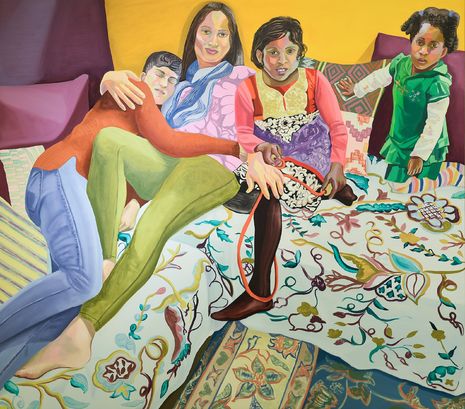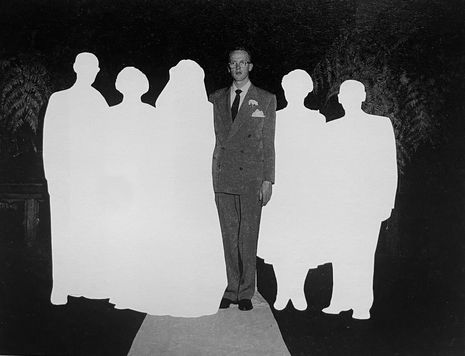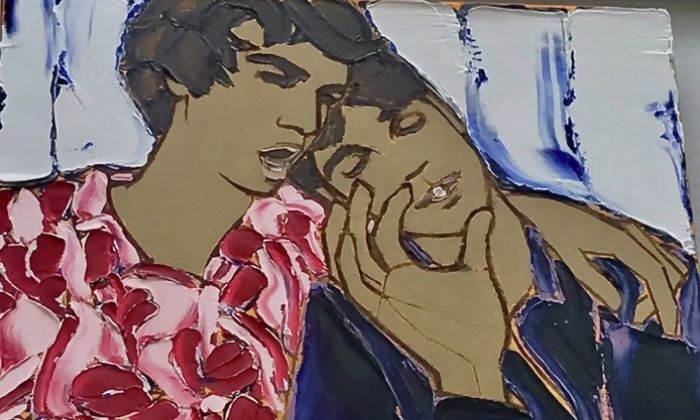A Review of ‘Real Families’: The Fitzwilliam’s latest exhibition
Esmé Cockain unpicks what makes up a ‘real family’ at The Fitzwilliam Museum’s new exhibition

Art both reflects and influences the society we live in. It captures how people think, feel and live while simultaneously changing the way that we see the world and what we accept as the norm. And this is why the Fitzwilliam’s latest exhibition is so relevant in its questioning of what makes a ‘real family’.
‘Real families: stories of change’, showing at the Fitzwilliam museum until the 7th January, delicately and beautifully explores the complexities of the modern family through the medium of visual art. Curated by Susan Golombok, a psychologist from Cambridge University’s Centre for Family Research, this exhibition presents families past and present of all shapes and sizes, as well as the love and tension within them. Every visitor will find something that resonates with their own lived experience, while also being exposed to the unfamiliar. These fascinating artworks ultimately piece together to form a celebration of diversity and an uncompromising declaration that there isn’t, and there never has been, any such thing as a ‘normal’ family.
"There isn’t, and there never has been, any such thing as a ‘normal’ family"
That’s not to say that things haven’t changed. The exhibition begins by visualising the transformation of the family in the last 50 years. A 1978 newspaper clipping with the rather aggressive headline ‘BAN THESE BABIES’ describes the public outcry at the use of artificial insemination amongst lesbian couples, labelled as “unnatural and immoral”. But the following room paints a new and different picture, one in which so-called alternative family styles are shown unapologetically at ease: transgender fathers, single parents by choice embracing their babies conceived via assisted reproduction, a lesbian couple nestled on a sofa watching TV with their kids.

The exhibition continues in this fashion, jumping between the old and the new to provoke interesting and unexpected comparisons. A painting named ‘The Holy Family’ dating back to 1660 is creatively placed in a section labelled ‘step families’. Joseph is depicted affectionately kissing the hand of baby Jesus who is poised upon his mother’s lap. We then see this renowned family in a new light; although Christ is the son of God, Joseph raises him as his own son in a strange prototype form of the step-family structure. Likewise a stunning oil painting of the Annunciation by Nicolas Poussin hangs beside Elina Brotherus’ self portrait of the same name in a clever allusion. The former depicts Archangel Gabriel’s visit to Mary, informing her that she was to carry the child of God; the latter explores the artist’s unsuccessful IVF treatment, an experience which she compares to ‘waiting for an angel who never shows up’.
"It’s difficult not to feel touched by the extremely personal, yet relatable stories that play out on the canvases"
It’s difficult not to feel touched by the extremely personal, yet relatable stories that play out on the canvases. Nicolas Nixon’s understated black and white photography of his own children encapsulates that love-hate sibling relationship that many would recognise. Their body language conveys a typical closeness and affection, mingled with a hint of aggression. Caleb Cole’s “Odd One Out” series triggers an equal emotional reaction. By taking family photographs purchased in antique stores and estate sales, removing all of the other figures and isolating just one person, Cole’s pieces communicate the uncomfortable feeling of not fitting in with the rest of your family. The central figure stands out against an expanse of white silhouettes, illustrating their isolation and the pressure to conform.

At times, the vastness and variety of the exhibition becomes overwhelming. There are gems to be found amongst an array of material that takes time to sift through. But you don’t get the chance to get bored: the artworks leap between mediums and styles, going from embroidered baby clothes to a Barbara Hepworth sculpture to a giant 3D installation.
Some of the pieces displayed are not conventionally pretty or aesthetically pleasing. Their value lies in the messages that they convey, the real stories that they tell and the raw emotion that you cannot help but feel when you see them in front of you. While some artworks at first seem unremarkable, reading the accompanying caption will suddenly open up a whole new meaning; a narrative that brings the work to life.
‘Real Families’ presents a pioneering and unique collaboration. Carefully curated art communicates decades of academic research, which work together to challenge assumptions and highlight the diversity of the modern family. The result is a compelling and insightful study of human relationships which is definitely worth a visit.
 News / Cambridge postgrad re-elected as City councillor4 May 2024
News / Cambridge postgrad re-elected as City councillor4 May 2024 News / Gender attainment gap to be excluded from Cambridge access report3 May 2024
News / Gender attainment gap to be excluded from Cambridge access report3 May 2024 Comment / Accepting black people into Cambridge is not an act of discrimination3 May 2024
Comment / Accepting black people into Cambridge is not an act of discrimination3 May 2024 News / Academics call for Cambridge to drop investigation into ‘race realist’ fellow2 May 2024
News / Academics call for Cambridge to drop investigation into ‘race realist’ fellow2 May 2024 News / Some supervisors’ effective pay rate £3 below living wage, new report finds5 May 2024
News / Some supervisors’ effective pay rate £3 below living wage, new report finds5 May 2024




